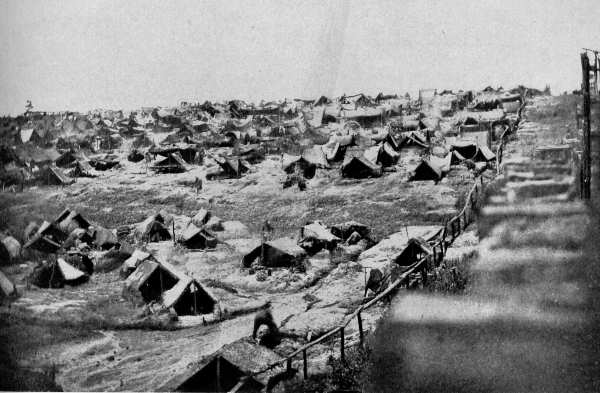|

Andersonville 1864 Huts Built Upon The "Dead–Line" Itself
This view of Andersonville
Prison, taken from the northeast angle of the stockade in the summer of
1864, gives some idea of its crowding and discomfort. The photographer had
reached a sentry-box on the stockade near the stream, from which the ground
sloped in both directions. On the right perches another sentry-box from
which a rifle may flash at any instant–for the rail supported by posts in
the foreground is the famous "dead-line," across which it was death to pass.
So accustomed to all this had the prisoners become, in the filth and squalor
and misery engendered by congestion, which finally left but thirty-five
square feet of room (a space seven feet by five) to every man, that even the
dead-line itself is used as a support for some of the prisoners' tents.
Since plenty of room appears farther back in this picture, it would seem
that the guards here were reasonably careful not to shoot without
provocation–which, as official orders of the time complained, they sometimes
were not in Point Lookout, Camp Douglas, and other prisons. General John H.
Winder and Captain Henry Wirz were in constant terror of an uprising in
force of maddened prisoners, and the rule was inexorable. Inside the line
are huts of every description. Some few are built of boughs of trees, but
for the most part they are strips of cloth or canvas, old blankets, even a
ragged coat to keep off the fierce rays of the ruthless sun. The shelters in
front are partly underground, since the blanket was not large enough to
cover the greater space. Some in the middle are simply strips of cloth upon
poles. |
